Revisiting a 1992 Sign Project that Acknowledged NYC's Lost Histories
In 1992, artist collective REPOhistory installed 39 aluminum signs in Lower Manhattan that highlighted the overlooked history of New York City.

In 1992, artist collective REPOhistory installed 39 aluminum signs in Lower Manhattan that highlighted the overlooked history of New York City. The event was timed to contrast with the festivities of the 500th anniversary of Columbus arriving in North America. Among the stories of the Lower Manhattan Sign Project were the city’s first Chinese community at the South Street Seaport, the origin of the name “Maiden Lane” in the male-dominated financial district, the landfill that stretched the shoreline after the Great Fire of 1835, and more recent and quieter tragedies like three homeless people who froze to death at Stone and Whitehall streets on a frigid night in 1991. Now 17 of these signs are on view at the Lower Manhattan Cultural Council (LMCC) on Governors island in (Counter) Public Art, Intervention & Performance in Lower Manhattan from 1978–1993.
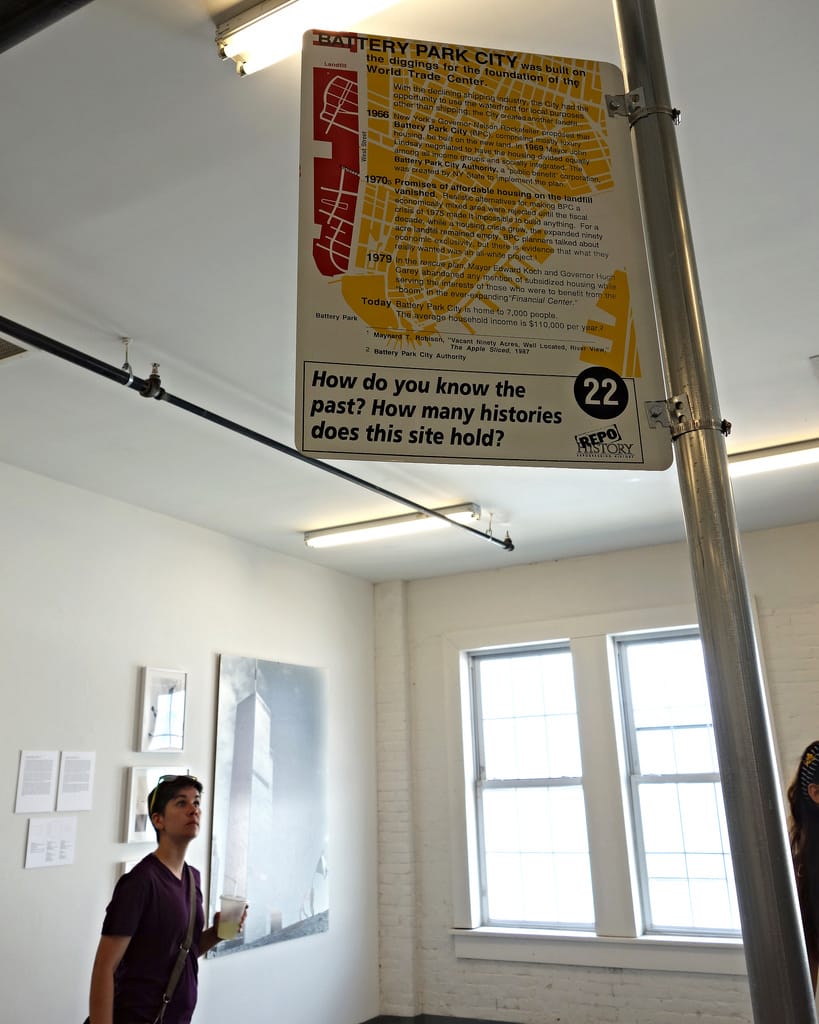
REPOhistory — a portmanteau of “repossessing history” — was a rotating collective of around 100 artists, historians, writers, and other collaborators who over a decade focused on public art that exhumed buried history. Later projects included a 1993 March to the African Burial Ground, which was rediscovered in 1991, and the 1994 Queer Spaces that also involved street signs but focused on the city’s LGBTQ history. Some of their signs and archives are housed at New York University’s Fales Library & Special Collections.
The selected signs at LMCC are arranged on poles, so you look up at them much as viewers in 1992 had done. The signs were sponsored by LMCC during their run from June 27, 1992 to June 30, 1993, which was accompanied by a guide (a digitized version is online at Dark Matter Archives). What’s surprising about the signs is not just that the essential history they relate, but that over two decades later, much of it still remains largely forgotten. For example, a sign by Tess Timoney and Mark O’Brien remembers the colonial slave market at the corner of Wall and Water streets, a place that only this past June received an official historic marker.
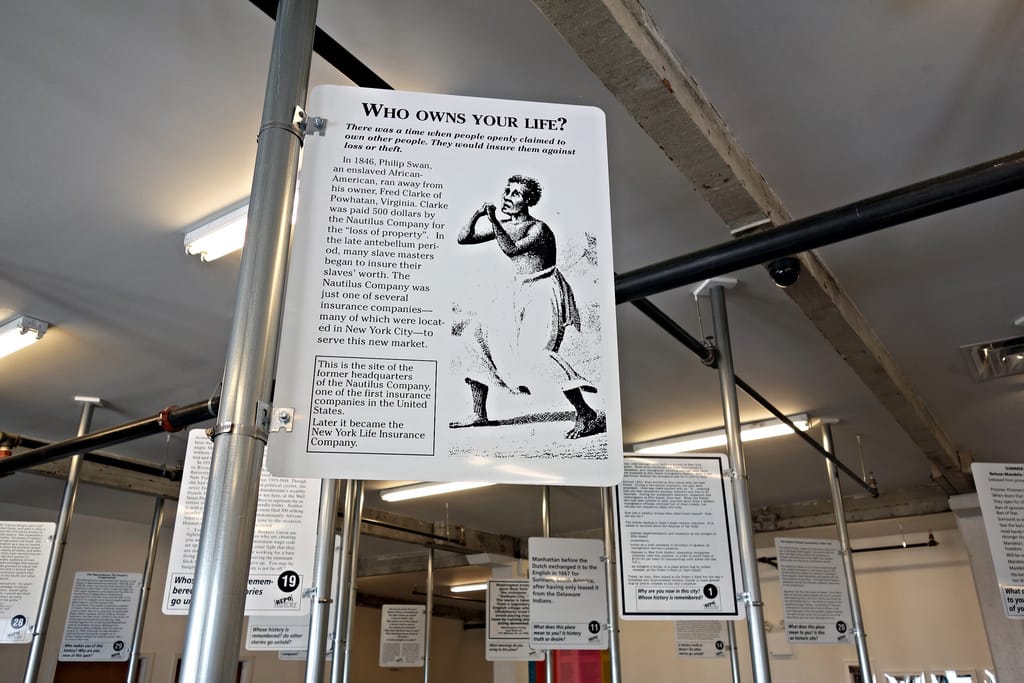
On a sign emblazoned with a photograph of Hart Island — New York’s potter’s field — Jayne Pagnucco recalled the 1904 story of an immigrant known as Rose, who was “unjustly detained and subsequently died at Ellis Island.” On another, Stephen Duncombe researched the 1689 uprising of the local militia led by Jacob Leisler, which resulted in two years of a popular government controlling the colony. After it was overthrown, “no carpenter would furnish a ladder for the gallows” for Leisler’s execution.
Greg Sholette’s sign highlights how J. P. Morgan (yes, that one) paid for someone to fight for him in the Civil War while he amassed more wealth — which some have suggested was created by speculating on the war’s outcome. Brian Goldfarb connected the 1849 cholera epidemic to the ongoing AIDS epidemic with a sign positioned right by Beekman Hospital, showing how in both cases space was limited for treatment and the sick were often ostracized.
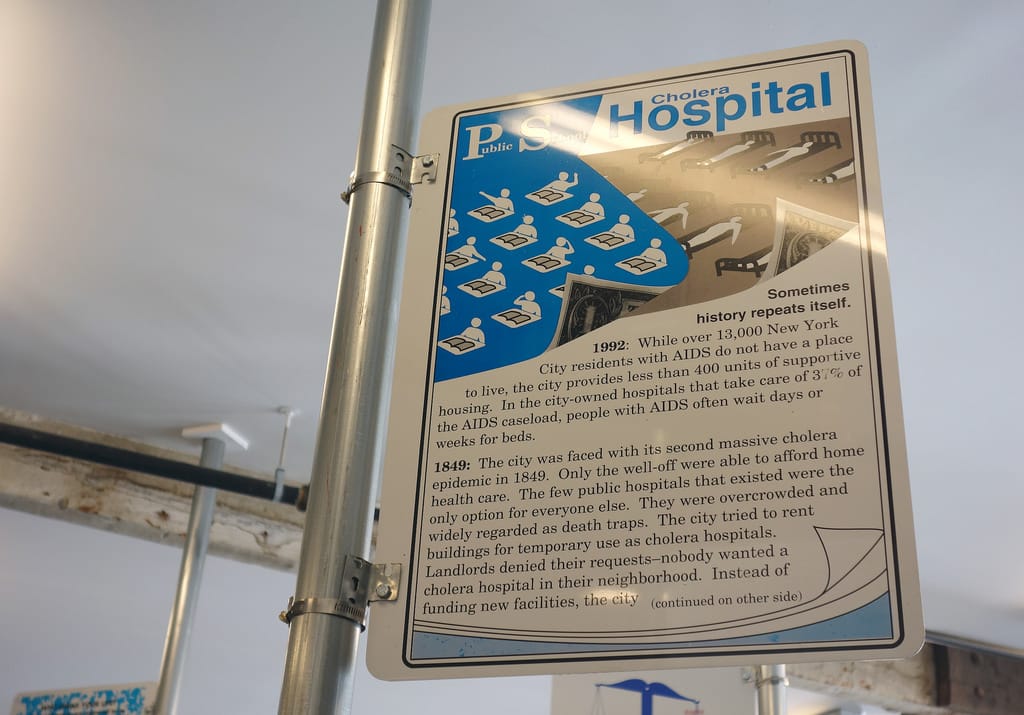
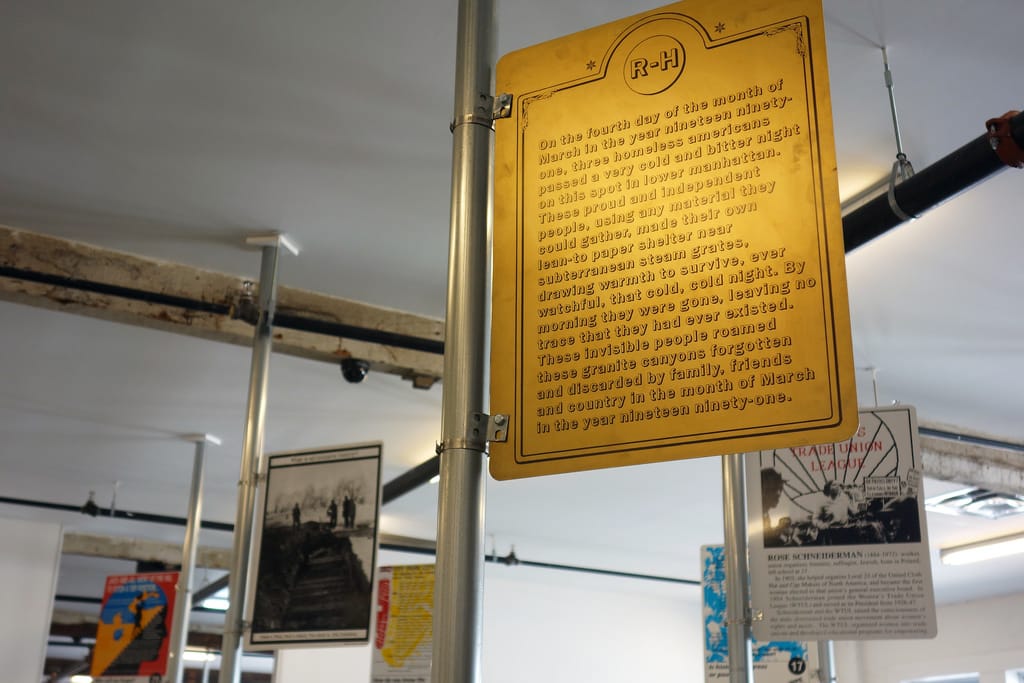
Recent and past, whether Jim Costanzo exposing the myth of stockbrokers jumping from windows in the 1929 crash, or Sam Binkley memorializing two people killed in a 1990 fire on a subway train headed towards Wall Street, each sign asks questions like: “What does this place mean to you?”; “Is this an historic site?”; “Are you a part of this history?”; “Whose history is remembered?”
On the project’s unveiling, participant Lisa Maya Knauer told the New York Times that REPOhistory “wanted to take the issues in the debate and put them where everybody who walks through the streets of New York City can be confronted or provoked or challenged by the information.” In her essay on the project, which was included in the original guide, Lucy Lippard wrote that there was “a chance the signs will be permanently maintained.” It’s unfortunate they were not, because these stories are still too often missing from the city’s narrative. Rather than a gallery, these signs should be reinstated out on the streets.
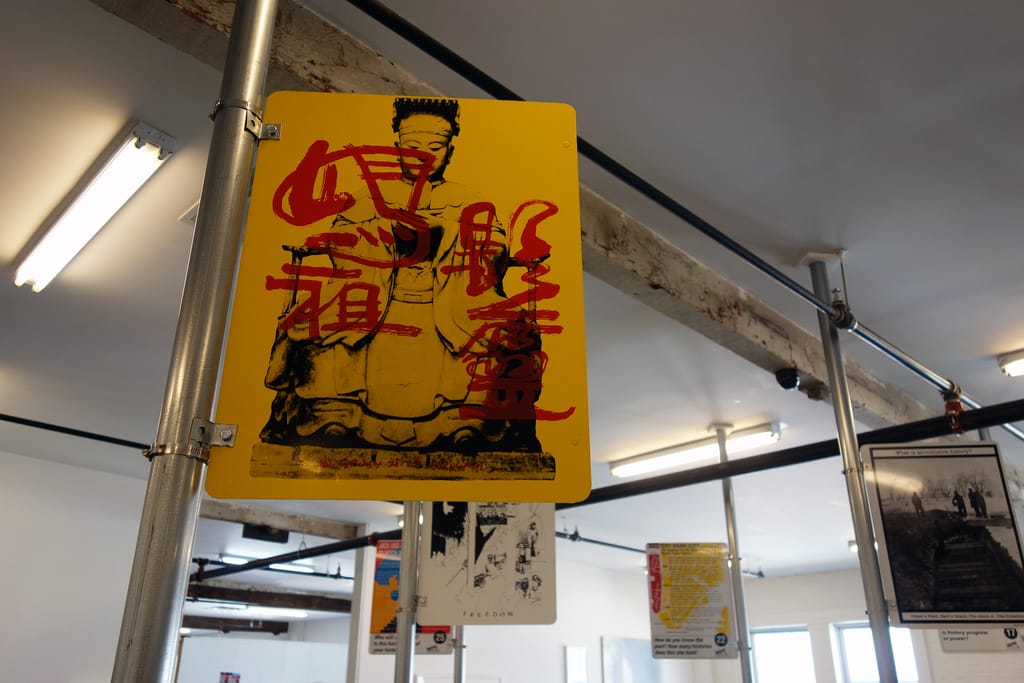
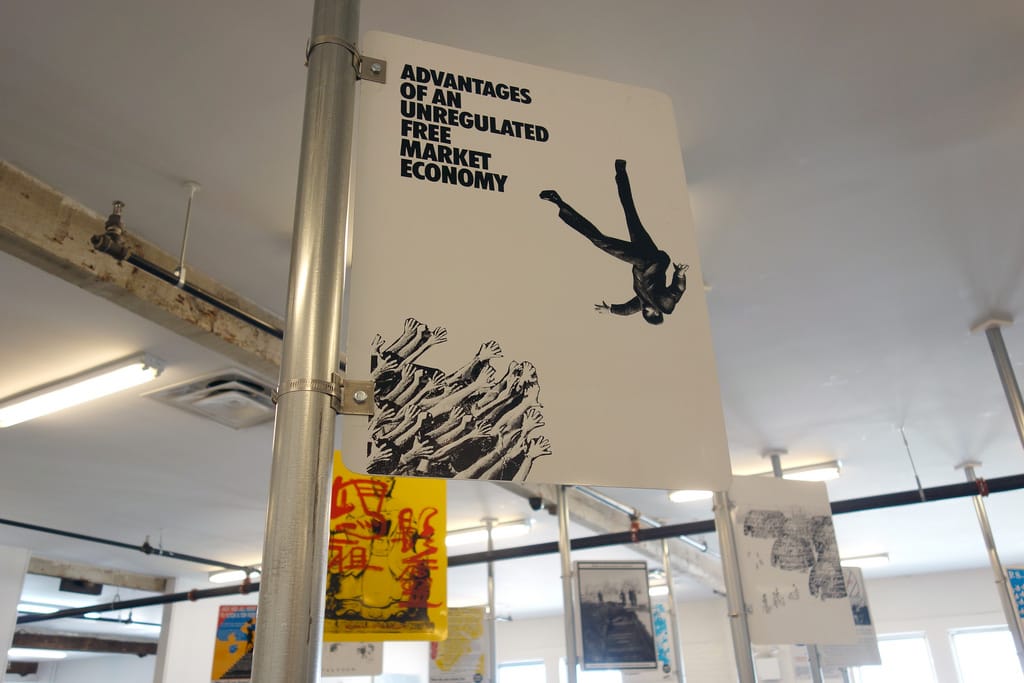
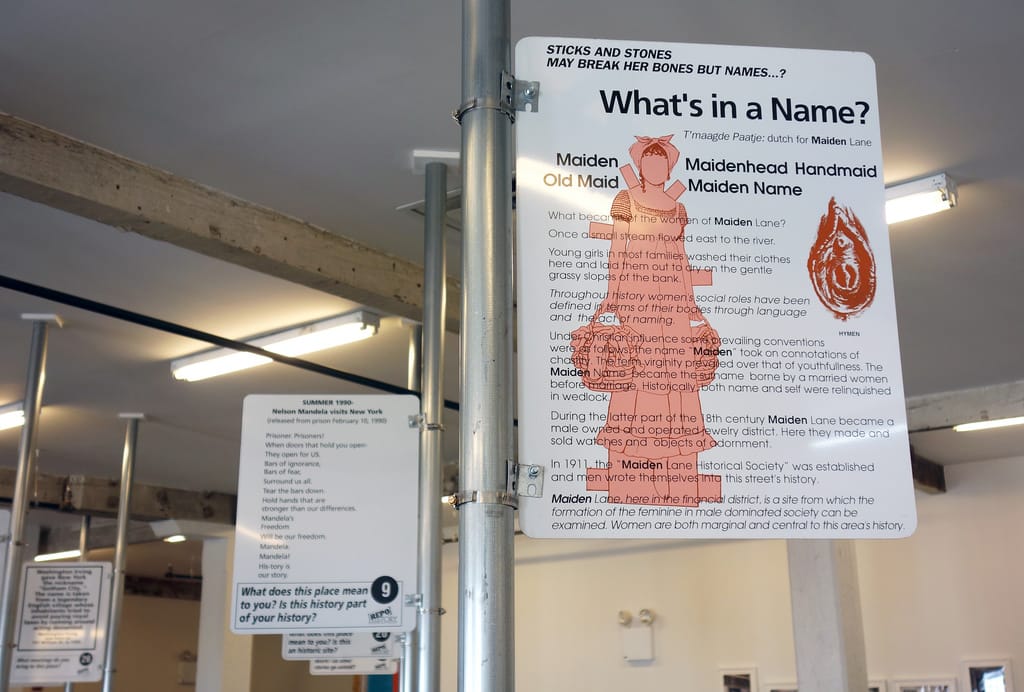
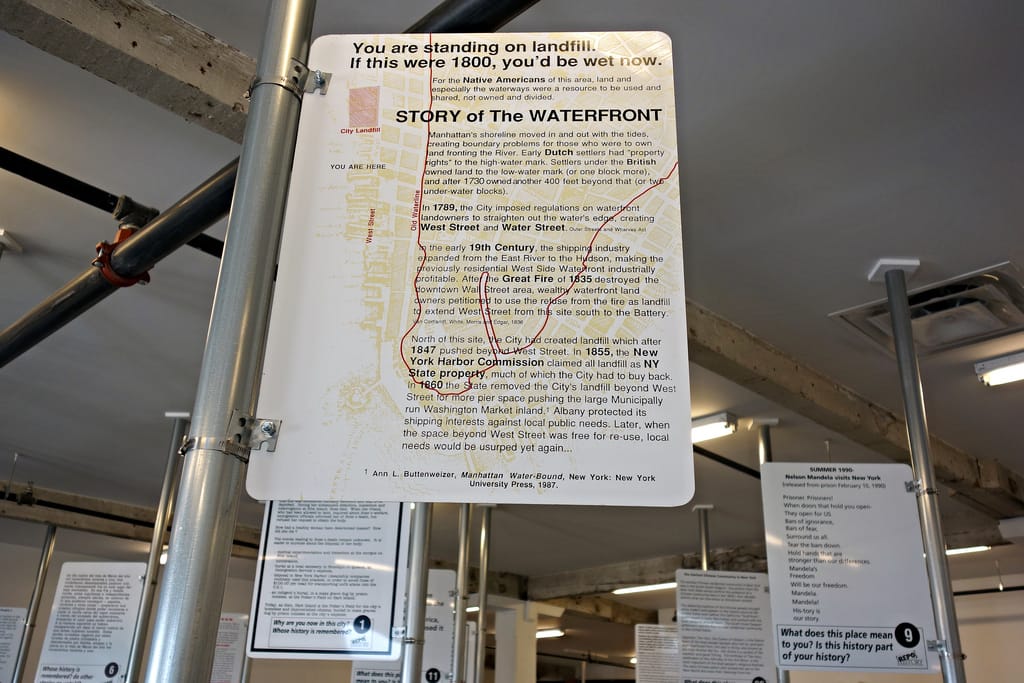

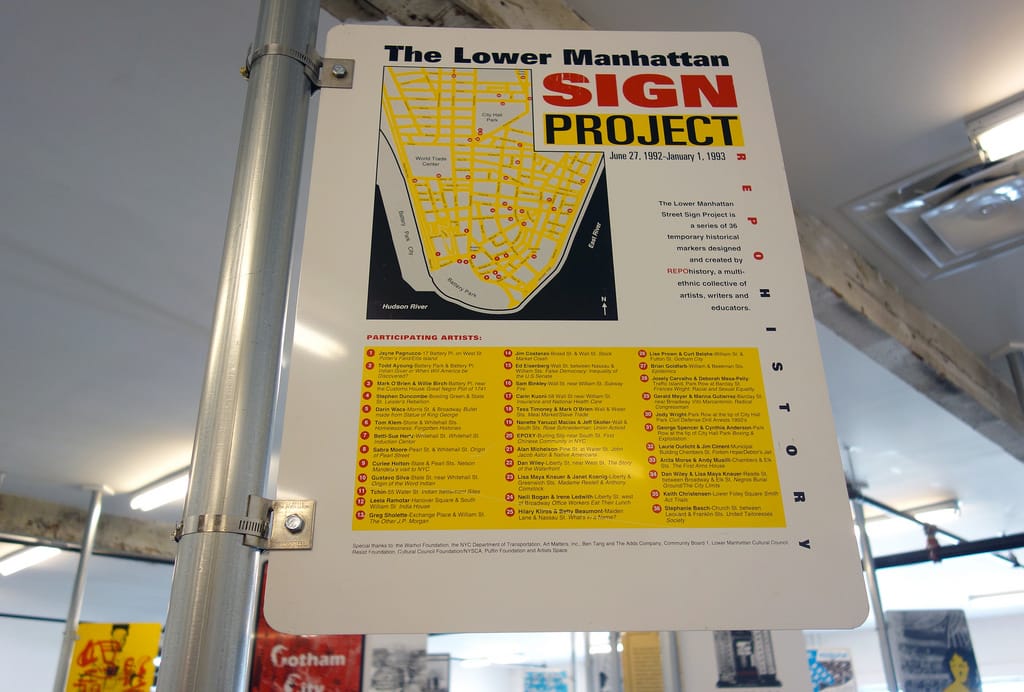
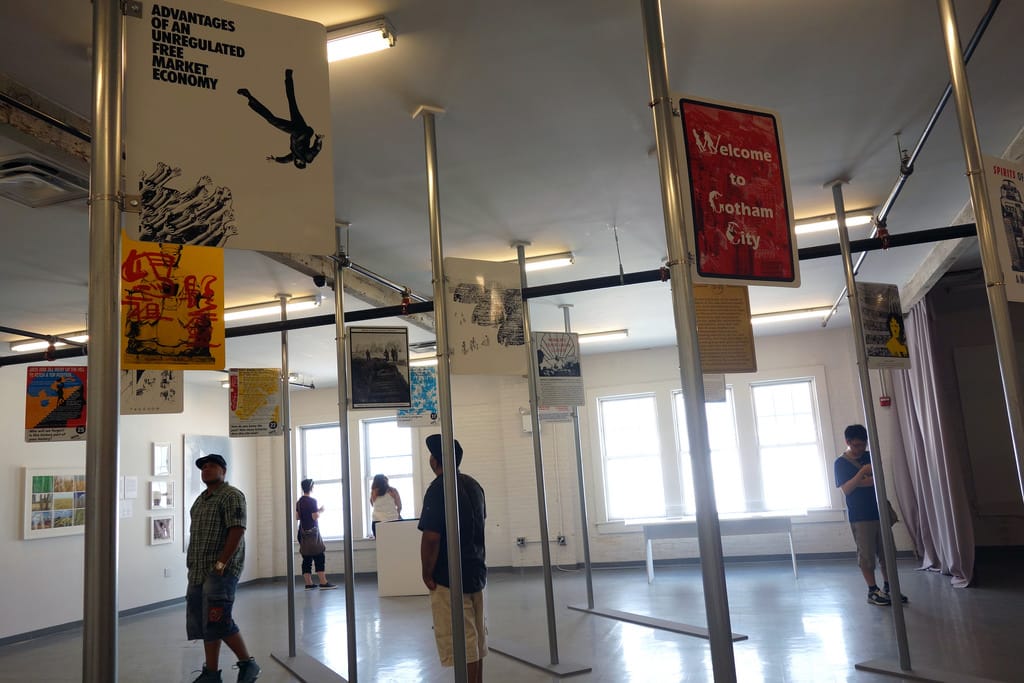
(Counter) Public Art, Intervention & Performance in Lower Manhattan from 1978–1993 continues at the Lower Manhattan Cultural Council (Building 110 near Soissons Landing) on Governors Island through September 27.





